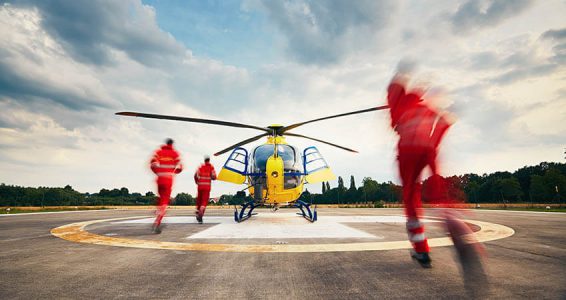4 years after the announcement of the Final Rule, CTS is finding out the truth behind the restrictions.
Previously, we posted a blog on what the 2014 restrictions meant for air ambulance personnel under the pressures to take the call (see 2014 Helicopter Air Ambulance Restrictions: What it Means for Medical Personnel). Let’s review some of the restrictions and high points from that blog:- In 2014, the FAA required all helicopter air ambulance operations be performed under Part 135, including adding pre-flight risk analysis programs and increasing safety briefings with personnel. They also required all air ambulance be equipped with radio altimeters and HTAWS.
- Although there are high pressures for air ambulance medical personnel, the FAA and many operators are backing the rights of pilots to refuse to fly if any unsafe conditions are present (especially those falling under the threshold of the new limitations).
 As part of the future of flying, following the NextGen requirements, the FAA has mandated the addition of Automatic Dependent Surveillance Broadcast (ADS-B) systems for all operators by January 2020 if they intend to operate in airspace requiring a transponder. The satellite-based system will provide three-dimensional locational information (including longitude, latitude, and altitude), along with information of direction and helicopter size, without the geographic drawbacks found in radar-based systems.
With these new strides towards safer flights, we can only anticipate seeing a decrease in accidents and incidents for aviation across the board, but particularly for air ambulance operations. Continually striving for increased education, communication, and technology helps ensure safer missions, hopefully regularly seeing a decreasing trend in the pressure and risks involved in air ambulance efforts.
As part of the future of flying, following the NextGen requirements, the FAA has mandated the addition of Automatic Dependent Surveillance Broadcast (ADS-B) systems for all operators by January 2020 if they intend to operate in airspace requiring a transponder. The satellite-based system will provide three-dimensional locational information (including longitude, latitude, and altitude), along with information of direction and helicopter size, without the geographic drawbacks found in radar-based systems.
With these new strides towards safer flights, we can only anticipate seeing a decrease in accidents and incidents for aviation across the board, but particularly for air ambulance operations. Continually striving for increased education, communication, and technology helps ensure safer missions, hopefully regularly seeing a decreasing trend in the pressure and risks involved in air ambulance efforts. RELATED READING
RELATED CTS TRAINING










